Strengthening Institutions
for Effective Governance
In Indonesia, we resolved
516 VILLAGE BOUNDARY
DISPUTES
using geospatial technologies and local community engagement.
BACKGROUND
What is
Governance?
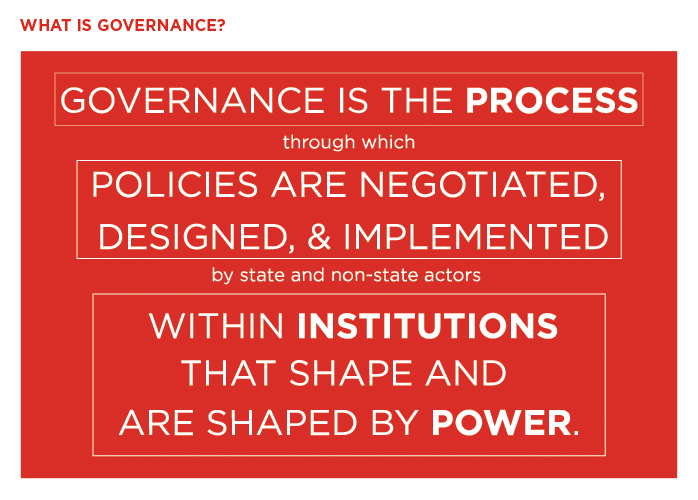
What are
Institutions?
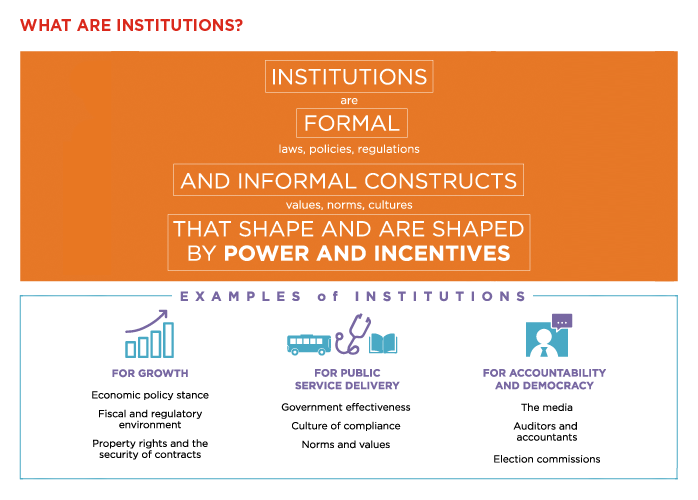
What are results
of Ineffective Governance?
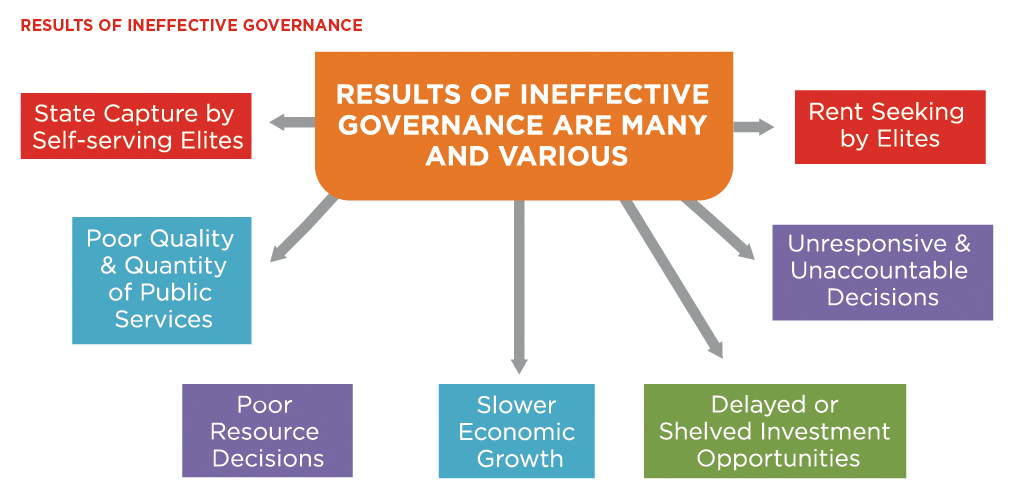
What is a
Governance Approach?

State performance must be improved in three dimensions.
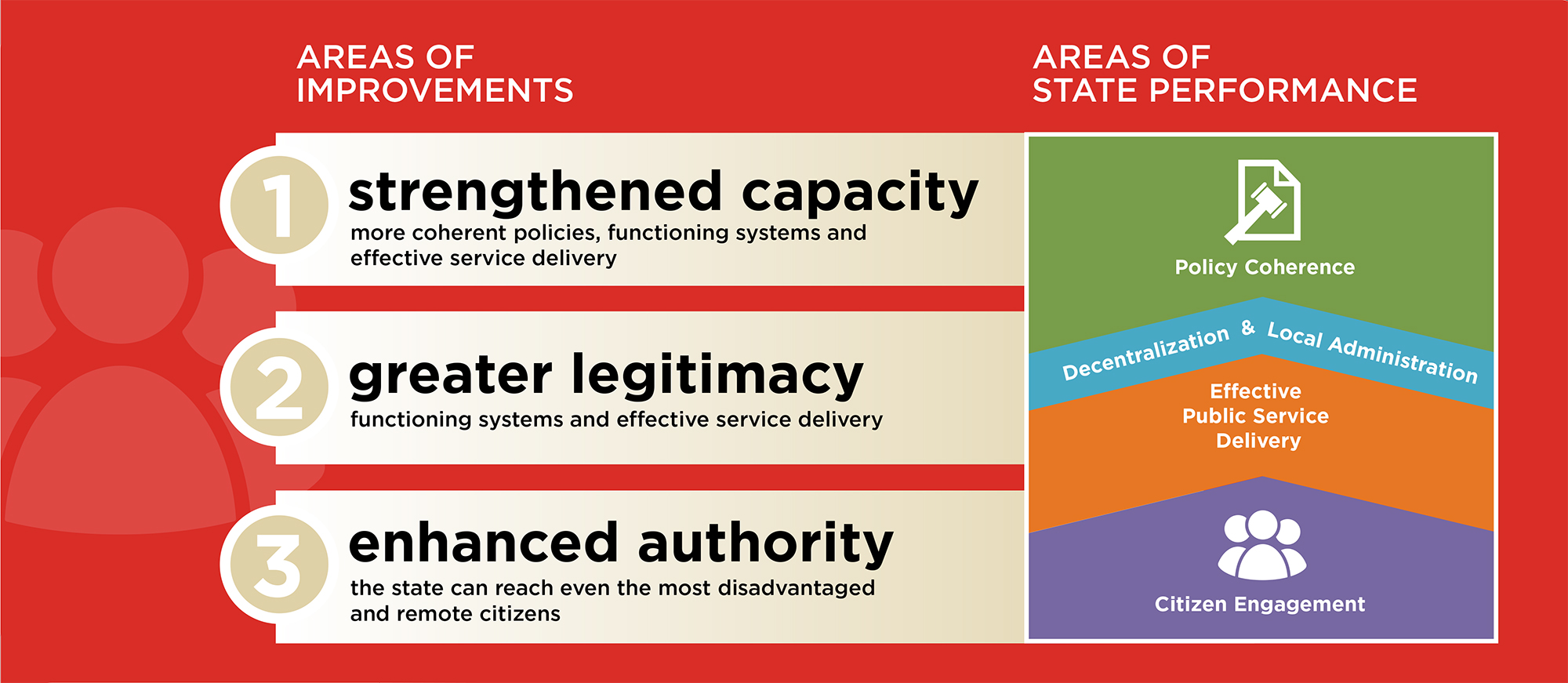

ABT'S IMPACT
We seek to achieve these results by working with all critical institutions: upstream at policy level, downstream at service delivery unit level, and with citizens to strengthen citizen engagement, social and political accountability and citizen satisfaction.
POLICY COHERENCE
DECENTRALIZATION & LOCAL ADMINISTRATION
EFFECTIVE PUBLIC SERVICE DELIVERY
CITIZEN ENGAGEMENT
Strong macroeconomic management, revenue mobilization and expenditure controls are key to improving economic governance and service delivery.
In Papua New Guinea (PNG) we are working closely with key central government agencies to put in place coherent macro-economic policies, to restore fiscal balance, and to meet Government of PNG development priorities.
With our support, the Government of PNG and the Asian Development Bank have negotiated a US$390 million concessional loan program which will allow the Government of PNG to deliver essential services throughout the country, while also strengthening its fiscal policy framework. We are also providing technical advice in the identified reform areas to support the Government of PNG achieve targets set by the agreement.
In Guinea, we are strengthening the capacity of the Health Commission of the National Assembly to better control government actions in the health sector and monitor the performance of the Ministry of Health (MOH). In 2016, most members of the Health Commission were newly elected parliamentarians with limited expertise in health.
We have strengthened their capacity related to budget analysis, draft law analysis and procurement, which contributed to a better understanding of the budget in general, and the health budget in particular. These efforts resulted in members of the Health Commission being able to advocate for more funding for the health sector, leading to a 44 percent increase in the health budget from 2016 to 2017. The increased funding led to an increase in the number of health workers recruited, purchase of vaccines with domestic resources (previously purchased with donor funding) and an increase in provision of health services.
Achieving improved national health outcomes requires effective oversight and accountability for policy commitments.
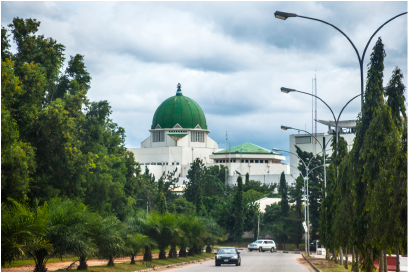
In Nigeria, we improved domestic resource mobilization by ensuring legislators keep their commitments on health funding to the most vulnerable. In 2014 the National Health Act earmarked 1 percent of Nigeria's Consolidated Revenue Fund to provide a basic package of health care to vulnerable people. However, subsequent national budgets did not actually allocate the funding.
Working with the federal and state MOH, we designed and implemented a strategic media engagement plan. It included one of Nigeria's most widely read newspapers, The Guardian, publishing a front-page story with the Senate President's promise to get the earmark passed. This public pressure led to the Senate demanding the healthcare earmark be included, with the bill ultimately passing into law in May 2018.
In Mexico, we developed and launched the National Observatory for Regulatory Improvement, which includes a unique database with information about the regulatory frameworks of every Mexican state.
The Observatory has been the most important mechanism to establish common data requirements and create consensus among state governments about actions needed to protect citizens and businesses from corrupt public sector officials who use local regulations for private gain.
Policy cohesion requires consensus and collaboration among subnational actors.
Decentralization requires training and capacity building, to ensure public servants have effective skills and know-how.
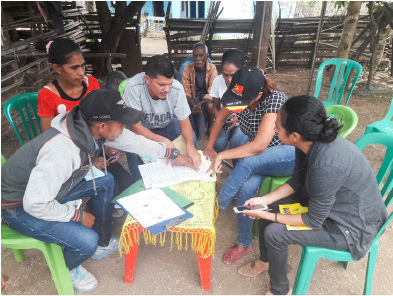
Local water management group members in Atabae, Bobonaro, Timor-Leste learn how to register contributions from the community in a cash book and how to conduct a cash count. This finance training was conducted to improve collection and management of household user fees for their local water system. It was delivered in partnership with local government and aims to assist communities in better managing rural water supply and maintenance.
In Papua New Guinea (PNG), we are facilitating development of public-sector leaders who will shape the future of the country. By coordinating the Pacific Leadership and Governance Precinct, which focuses on building the leadership skills, values and ethics of the next generation of public servants across national and subnational levels, we are supporting the institutional strengthening of the University of PNG's School of Business and Public Policy and the Pacific Institute of Leadership and Governance.
Intensive courses tailored to the needs of public service executives and emerging leaders, and discussion events that facilitate dialogue on key policy areas of national importance, engage future leaders across sectors. Since June 2016, 956 public servants have completed these courses, with 47 percent of graduates being women.
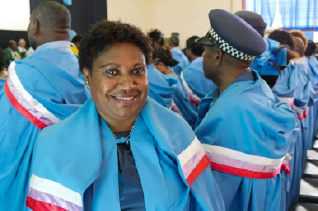
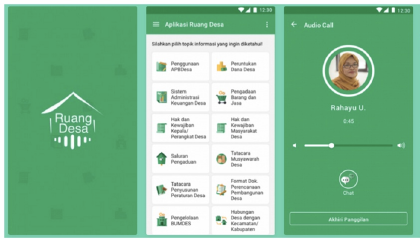
In Indonesia, Ruang Desa, a smartphone simulation game, helps officials across Indonesia's 75,573 villages effectively carry out new responsibilities, including managing new funding. The app connects village officials to trained facilitators to advise them on developing the village budget, engaging communities in village planning and budgeting, and reporting their use of funds. The app also provides real-time analytics on users' learning gaps to guide development of future e-learning content.
In Indonesia, land disputes and conflicts erupt from lack of clarity on land licensing and jurisdictional boundaries, causing overlapping land rights claims. Such tensions heighten investment risks for both communities and corporations and impede sustainable resource management.
To enable flow of sustainable investment to villages across Indonesia, we worked with 173 villages to generate accurate and inclusive maps through geospatial technologies and local community engagement. We delineated more than 381,000 hectares of land, producing more than 800 high-precision maps and resolved 516 village boundary disputes. Our participatory planning and engagement approach delivered practical training to local stakeholders that laid the foundation for future initiatives in economic development and social change.
Clear geospatial delineations and boundaries are critical to effective decentralization, resource mobilization, and local empowerment.
Technology solutions that are interoperable and integrated allow for decentralized yet real-time, effective decision making.
In Tanzania, we developed and implemented technology tools that revolutionized the country's budgeting, staffing and facility-level financial management systems. As a result of our work, for the first time ever, Tanzania now has a country-wide, web-based planning, budgeting and reporting system for public services.
Two critical new human resources management tools resulted in improved distribution of 3,152 staff. And development of electronic versions of the Facility Financial Accounting and Reporting System enabled health and school facilities to manage their own financial resources and be accountable when receiving direct financing.
Transition from paper-based to electronic facility-based financial management has been rolled out in over 7,000 health facilities and 25,000 schools, improving the effectiveness and satisfaction of public servants and significantly increasing efficiency of utilization of public funds.
In Indonesia, we established and developed data information systems for village governments to be used for village administration, legal identity and planning and budgeting. The approach was piloted in 106 villages in five provinces, using six different village data system prototypes. As a result, an additional 119 non-pilot villages have subsequently replicated the establishment of village data systems, and local governments have allocated budgets worth a combined total of AUD 1.6 million to establish and develop village data systems.
Accountable governing bodies, effective management, and hospital reform implementation guidelines lead to better service delivery.
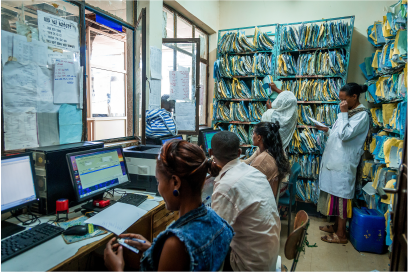
In Ethiopia, we worked with the government to roll out governance reforms as part of its reform program for health service delivery. To make facilities responsive to local needs and mitigate administrative complexities, the government introduced boards, governing bodies and management committees for health centers.
Boards are now well established in most health facilities. They facilitate linkage with the community, and are used to advocate for increased resource mobilization. In addition, these governance structures serve as the major monitoring and decision-making bodies, and currently all reform efforts, including health care financing, depend on their functioning. The boards enable facilities to retain and reinvest client fees to improve quality services, including purchasing needed supplies. In just the first four years of the health care financing being enacted, the Meshualekia Health Center in Kirkos sub-city of Addis Ababa collected nearly 4.6 million Ethiopian Birr (US$ 231,795) and, under board oversight, used most of it to improve quality of care for its more than 52,000 clients.
We developed the hospital reform implementation guideline (EHRIG) with well-defined quality standards. The national average EHRIG attainment in 2015 was 84.5 percent, with demonstrable impacts in reduced waiting times and institutional mortality. Bed occupancy, average waiting time for surgery and patient satisfaction all showed improvements.
In Mexico, we developed a Corruption Risk Index to evaluate public contracts in the federal procurement system. This analytical model and database -the first of its kind in Mexico-flags barriers to competition, lack of transparency, and legal violations in the contracting processes, helping government and independent experts focus resources to clean up federal procurement.
We led a multi-stakeholder working group focused on reforming Compranet, the federal government's procurement platform. The group's recommendations were endorsed by the Ministry of Public Administration, with a key point being that procurement data must include planning and implementation plans in addition to the contract award.
Elimination of corruption through transparency leads to competition, equity, and efficiency.

Integrated services and partnerships strengthen the social safety net.
In Papua New Guinea (PNG), we are supporting the Church Partnership Program (CPP) through grant management, administration, and logistics support. In PNG, 75 percent of the population belongs to the country’s seven mainline churches, which provide around half of PNG’s basic health and education services.
CCP partners work collaboratively at the national and community level to deliver services, deliver social inclusion and strengthen systems and local capacity.
Since June 2016, CPP has trained 372 people (47 percent women) in positions related to the program’s focus areas of health, education, peace and prosperity, gender equity and social inclusion and disaster risk reduction. Nearly 14,000 people (47 percent women) accessed improved services provided by churches.
Empowering youth to demand government transparency and effectiveness builds the next generation of engaged citizens.

In Mexico, we have designed elementary school curricula called Escuela de Héroes to promote civic involvement, complete with Héroes Ciudadanos masks, in the style of Mexican luchadores (wrestlers). Stories, videos, gifs and other teaching tools encourage primary school children to take an active interest in making government more honest and open. More than 800 children have participated in the pilot program in schools.
To more effectively engage college students, we have launched hackathons to find solutions for public service problems faced by everyday people. One solution is a risk map tool that cross-references crime statistics with public transportation routes. Over three years, nine ideas have been financed, and four have been adopted and fully implemented.
In India, we evaluated a civil society-led effort to monitor utilization and quality of maternal health services in three districts of Gujarat. Social accountability tools were used to assess whether pregnant women were able to access maternal health entitlements. In addition to community-level awareness-raising efforts around available services, the civil society partners developed a checklist that graphically presented maternal health entitlements and services and used this tool to track use of prenatal and postpartum key services.
We found that the social accountability tools employed were successful. The proportion of women delivering at facilities increased by 61 percent in the two more marginalized districts, and services such as antenatal care clinics were restarted, with pregnant women involved in the community monitoring effort consistently receiving more priority interventions.
Open government initiatives give citizens the knowledge and tools necessary to improve government accountability.
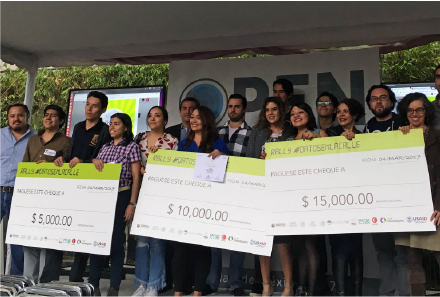
For Mexico's Ministry of Finance, we updated the budget transparency website, which was transformed into an interactive data platform. We organized a Data in the Street Rally to encourage citizens to take to the streets with public works projects to see if the status of those projects matched the status reported on the website. We reported progress by uploading pictures via Twitter and Facebook using the hashtag #DatosenlaCalle. Judges chose the best picture from teams across 15 Mexican states and announced the three winning teams. The online campaign reached over 85,000 people, with the status of more than 200 public works projects reported.
In Tanzania, we designed, developed and rolled out a Government Web Framework of more than 200 regional and local government websites to enable communities to access information about public services and provide feedback into the availability and quality of those services.
Our deepest gratitude to our clients, funders and local partners, whose support and collaboration is critical in enabling us to achieve our mission.
- United States Agency for International Development
- Australian Department of Foreign Affairs and Trade
- United Kingdom Department of International Development
- Government of Papua New Guinea
- Government of Timor-Leste
- Government of Tanzania
- Government of Mexico
- Asian Development Bank
- World Bank
- Millennium Challenge Corporation
- UNICEF
- Bill and Melinda Gates Foundation

- SOCIAL EQUITY & EMPOWERMENT
- EFFECTIVE GOVERNANCE
- THRIVING NATURAL ENVIRONMENT
- GOOD HEALTH
- ECONOMIC SECURITY
- Fighting Mosquito-borne Disease
- Responding to the Opioid Epidemic
- Empowering Women and Girls
- Closing the Achievement Gap
- Driving Sectoral Response to Climate Change
- Protecting Environmental and Human Health
- Strengthening Agricultural Markets for Economic Security
- Ending and Preventing Homelessness
- Strengthening Institutions for Effective Governance
- Our Employee Wellness
- Our Leaders at all Levels
- Our Environmental Responsibility
- Our Financial Health
- Our Ethics and Governance
- Our Communities